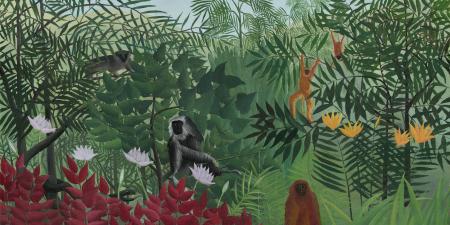With its upward of 44,000 individual panels and 83,000 names that span more than 720,000 square feet, the Names Project AIDS Memorial Quilt, of which this month's image constitutes a segment, is the largest community art work initiative in the world.
The project was conceived of in 1987, by a small group of strangers in San Francisco, to document for posterity the stories of friends and loved ones, whom AIDS had claimed. They provided the first quilted panels -- pieces the size of an average human grave, 3 feet by 6 feet - to celebrate the lives of persons dear to them, before inviting others around the country and the world to contribute to the work. The age-old tradition of quilt-making offered a creative means to bring grieving people together to tell stories and share company, in an effort to remember and heal. A quilt is, after all, a symbol and source of comfort and warmth.
What started off as an effort to remember the stories of people who had fought a battle with AIDS developed into a novel form of memorial, one that extends beyond its physical size, as the most recognizable symbol of the AIDS epidemic. Today the quilt plays an important role, in addition to its memorial function, as an educational tool and a unique work of art.
"Not all battles are fought with a sword," reads the slogan of the quilt, which highlights its efforts to help bring an end to AIDS through set goals. As the largest collection of information ever assembled about the effect of a disease, the quilt, which travels across the world, has helped to increase public awareness about the AIDS epidemic and its enormity. It has assisted with prevention of HIV through education and served to raise funds for AIDS service organizations within various communities.
As a work of art, the Quilt Project uses an array of materials (legos, keys, wedding rings, cremation ashes are just a few) and mediums (panels often come accompanied by documents which are cataloged) to narrate the popular culture of the past several decades and of the present. Individual panels of the quilt may be searched by name or by block number. Tragically, indeed, the story is still being written, as reflected by the continued growth of the quilt.



